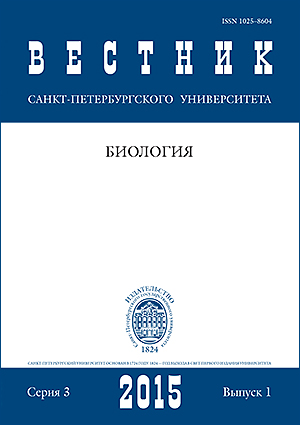The variability of the leaves structure of Artemisia absinthium (Asteraceae)
Abstract
Artemisia absinthium has an extensive area on the territory of Russia. It grows in forest, forest-steppe and steppe zones. The structure of leaves in wormwood plants growing in contrasting habitats is compared. The leaves differ greatly in their size, degree of the palisade and water-storing tissues development in the mesophyll, the thickness of the epidermal cells external walls, the density of stomata location and the density of pubescence, the relative conducting surface, etc. The characters for which difference between the studied samples was detected are treated in ecological anatomy as adaptively significant. Along with ecologically-geographical variability this species is characterized by significant endogenous variability, on the basis of which specialized forms can originate. It affects the number of generations of cells in the tissues of the plate, its thickness, the ratio between the conducting tissues in the petiole and the relative conductive surface. Refs 42. Figs 2. Таble 1.
Keywords:
Artemisia absinthium, leaf, variability
Downloads
References
Downloads
Published
How to Cite
Issue
Section
License
Articles of Biological Communications are open access distributed under the terms of the License Agreement with Saint Petersburg State University, which permits to the authors unrestricted distribution and self-archiving free of charge.





